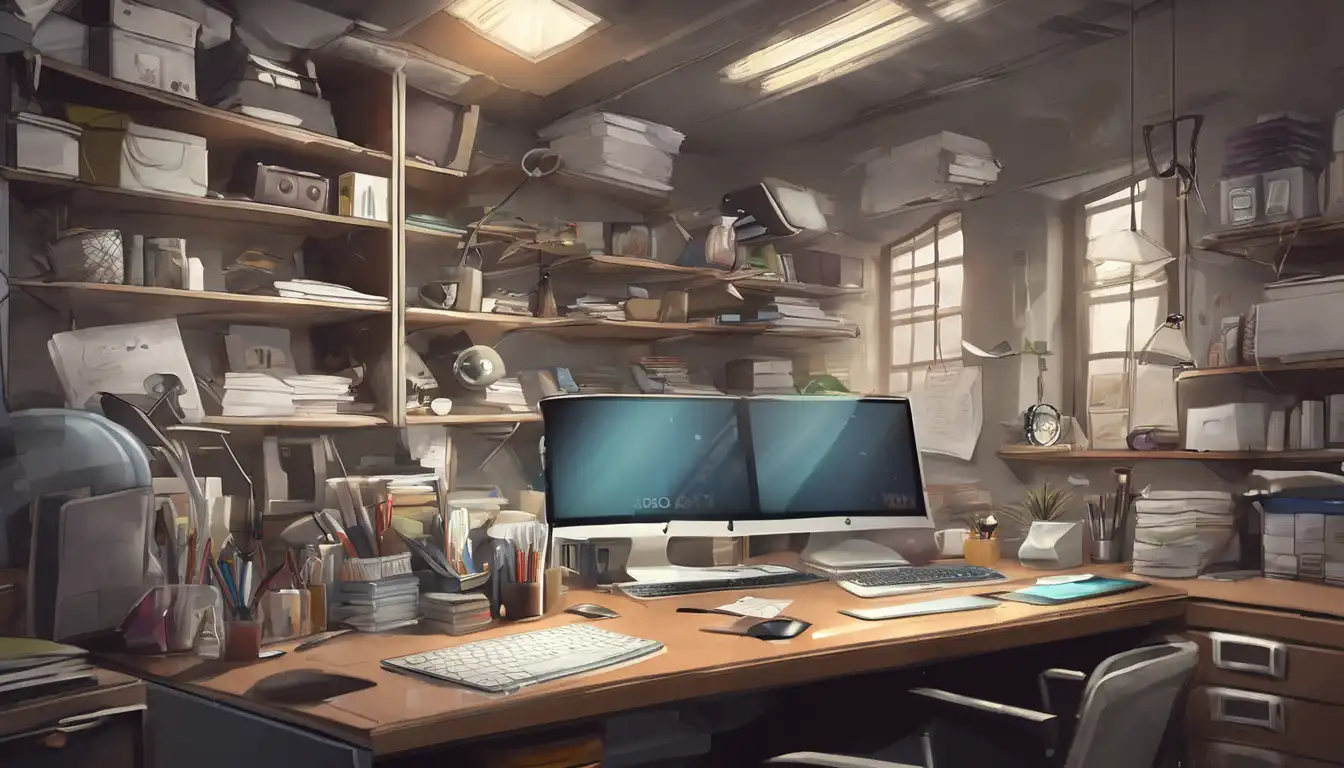Why Your Workspace Matters More Than You Think
Your physical environment plays a crucial role in your ability to concentrate and maintain productivity. Research from the Journal of Environmental Psychology shows that organized workspaces can improve focus by up to 32% compared to cluttered environments. Whether you work from home or in a traditional office setting, creating an intentional workspace design can significantly impact your mental clarity and work output.
The Psychology Behind Workspace Organization
Clutter isn't just a physical problem—it's a mental one. When your workspace is disorganized, your brain has to work harder to filter out distractions. This constant background processing drains your cognitive resources, leaving less mental energy for the tasks that matter most. By implementing strategic organization systems, you reduce cognitive load and create mental space for deep work.
Visual Noise and Cognitive Load
Every unnecessary item in your line of sight represents visual noise that your brain must process. Studies indicate that reducing visual clutter can decrease stress levels and improve information retention. Consider how our mind decluttering techniques complement physical workspace organization for maximum focus benefits.
7 Essential Strategies for Workspace Optimization
1. Implement the Zoning Method
Divide your workspace into distinct zones based on activity type. Create separate areas for deep work, administrative tasks, and creative thinking. This mental separation helps your brain switch contexts more efficiently. For example, keep your computer in one zone for focused work, while having a separate area for reading and planning.
2. Master Cable Management
Tangled cables create visual chaos and practical frustrations. Use cable organizers, zip ties, or adhesive clips to route cables neatly behind your desk. Consider investing in a wireless setup where possible to minimize cord clutter. This small change can dramatically clean up your workspace appearance.
3. Optimize Your Lighting Setup
Proper lighting is crucial for reducing eye strain and maintaining energy levels. Position your desk to maximize natural light, but avoid direct glare on your screen. Supplement with task lighting that provides adequate illumination without creating harsh shadows. Research shows that proper lighting can reduce headaches and improve mood by up to 25%.
4. Create an Ergonomic Foundation
Your physical comfort directly impacts your ability to focus. Ensure your chair supports proper posture, your monitor is at eye level, and your keyboard and mouse are positioned to prevent strain. These ergonomic considerations might seem secondary to organization, but they're fundamental to maintaining concentration over extended periods.
5. Implement the One-Touch Rule
Adopt the principle of handling each item only once. When you pick up a document or item, decide immediately whether to file it, act on it, or discard it. This prevents paper piles and miscellaneous items from accumulating on your workspace. Combine this with our digital organization strategies for comprehensive clutter control.
6. Designate Homes for Everything
Every item in your workspace should have a designated home. Use drawer organizers, desktop caddies, and shelf dividers to create specific locations for supplies, documents, and personal items. This system makes cleanup quick and ensures you can always find what you need without distraction.
7. Establish Daily Reset Routines
Spend the last 5-10 minutes of each workday resetting your workspace. File documents, return supplies to their homes, and clear your desktop. This evening ritual ensures you start each morning with a clean slate, mentally preparing you for a productive day ahead.
The Digital Workspace: Often Overlooked but Equally Important
While physical organization gets most of the attention, your digital workspace requires equal consideration. A cluttered desktop, disorganized files, and multiple browser tabs can be just as distracting as physical clutter.
Desktop and File Organization
Keep your computer desktop clean by creating folders for current projects and archiving completed work. Use consistent naming conventions for files and establish a logical folder hierarchy. Regular digital decluttering sessions can prevent your virtual workspace from becoming a source of distraction.
Browser and Email Management
Use browser bookmark folders and tab management extensions to keep your digital research organized. Implement an email filing system that moves messages out of your inbox once they're processed. These digital habits complement your physical organization efforts for comprehensive focus optimization.
Maintaining Your Organized Workspace
Organization isn't a one-time project—it's an ongoing practice. Schedule weekly check-ins to assess what's working and what needs adjustment. As your work evolves, your organizational systems should adapt accordingly. Remember that the goal isn't perfection, but creating an environment that supports your best work.
Seasonal Deep Clean Sessions
Every three months, conduct a thorough workspace audit. Purge unused supplies, update your filing system, and reassess your organizational tools. These seasonal reviews prevent small accumulations from turning into major clutter problems.
The Connection Between Workspace and Mindset
Your organized workspace does more than just reduce distractions—it signals to your brain that it's time to focus. This environmental cue helps create mental boundaries between work and relaxation, especially important for remote workers. The physical act of organizing can also serve as a mindfulness practice, grounding you in the present moment before beginning focused work.
By investing time in workspace organization, you're not just cleaning your desk—you're designing an environment that actively supports your productivity goals. Start with one strategy today and gradually build toward a workspace that helps you achieve laser-sharp focus consistently.
